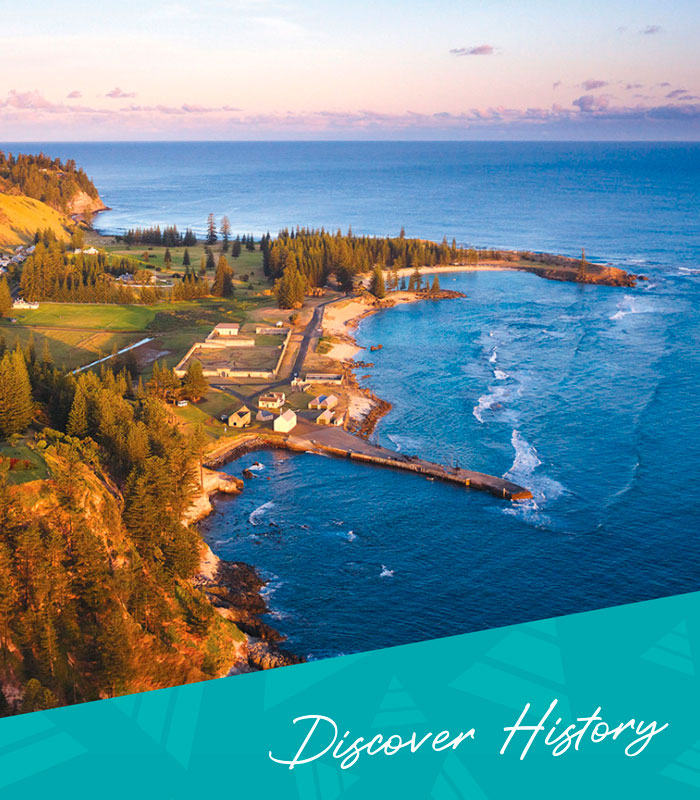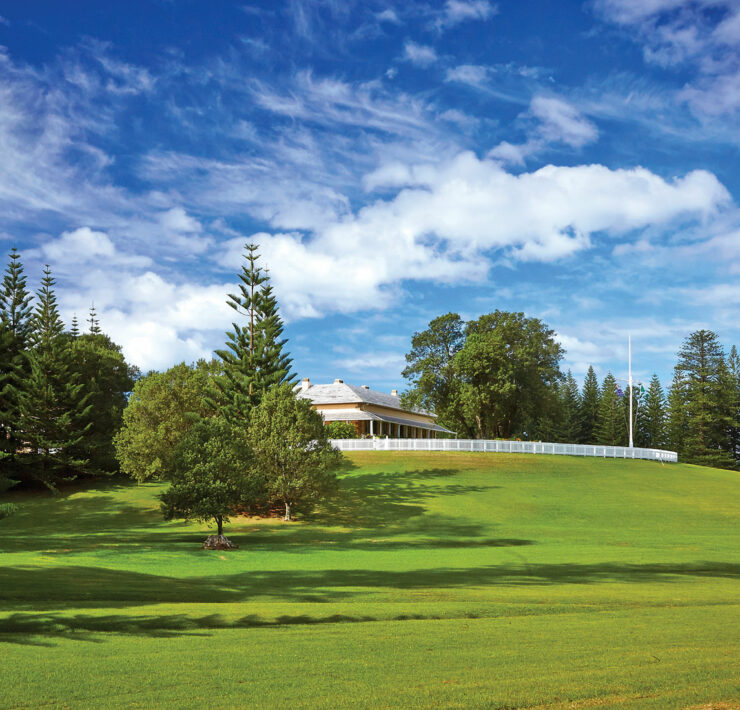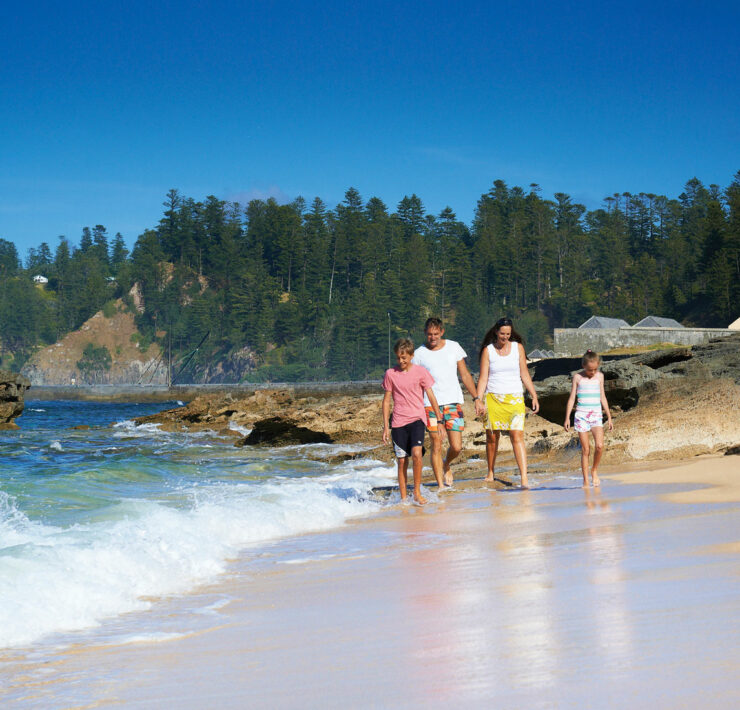Home » All Articles » Bound for the Norfolk Plains: A lost world in the south
Bound for the Norfolk Plains: A lost world in the south

The name ‘Norfolk’ is a prominent feature of the Tasmanian landscape. Norfolk Bay in the south east and Mt Norfolk on the west coast were named by Matthew Flinders in 1798 when he circumnavigated Van Diemen’s Land in his Norfolk Island-built sloop Norfolk. The town of New Norfolk was named for the Norfolk Islanders who were deported from Norfolk Island and settled there between 1806 and 1808, as were various Norfolk street names around the state.
But perhaps the most melancholy name recalls the last wave of Norfolk Islanders expelled from the island in 1813 and re-settled just south of Launceston in a district called the Norfolk Plains. Norfolk Island was settled in 1788, abandoned in 1814 and then re-settled in 1825. The connection between Norfolk Island and Tasmania’s Norfolk Plains has been obscured for many years until the recent World Heritage listing of the Australian Convict Sites shone fresh light on this lost world.
Norfolk Plains is a farming district surrounding the villages of Longford and Cressy on the floodplain of the Lake (now Macquarie), South Esk and Liffey rivers of northern Tasmania. For several thousand years this land formed part of the country of the Palawa people. In 1804 British colonization of northern Van Diemen’s Land began with the arrival of a party of officials, soldiers and convicts under Lt Col William Paterson to establish the town of Launceston at the head of Port Dalrymple, as the Tamar estuary was then called. Governor King in New South Wales, the founding Lt Governor of Norfolk Island in 1788, had sent Paterson to begin the colonization, and within a short time his party had penetrated deep into Palawa land. They found countryside that was lightly timbered, fertile and well-watered, and in 1805 an area about 17 kilometres south of Port Dalrymple was set aside as a Crown reserve.
Governor Lachlan Macquarie arrived in New South Wales in 1810 to suppress the Rum Rebellion, free Governor Bligh and re-establish the Crown’s authority. He also received instructions to complete the abandonment of Norfolk Island that had begun in 1806. In 1811 during his tour of Van Diemen’s Land he visited the reserve. He noted the “fine extensive rich plains” and decided they would provide a convenient solution to his Norfolk Island problem. He named the plains the Norfolk Plains, clearly intending to entice the Norfolk Islanders to this new home. The very name Norfolk Plains conjured up an image of abundance and plenty with a reassuring touch of homeliness.
Despite a mixture of incentives and force, neither Governor King nor Governor Bligh had really supported abandoning Norfolk Island despite explicit instructions to do so from London. Both men supported the Norfolk Island settlers and their desire to remain in the home they had spent nearly 20 years building. Macquarie had no such affinities, and he placed Lt Tankerville Crane of his own 73rd Regiment in charge of the island with orders to let the buildings and public works run down and to entice the islanders to leave. The last of the Islanders were not willing emigrants.
Macquarie instructed Surveyor General Meehan to mark out fifty farms of varying sizes at Norfolk Plains, and in 1813 the Minstrel and then the Lady Nelson arrived at Launceston with some 145 Islanders, who were taken upriver to their newly allocated farms on either bank of the South Esk River.
The Islanders had been divided into three classes: first class contained the officials and ex-military settlers, second class the ex-convicts with large families and well managed properties, and third class all the rest. Compensation for giving up their island home was to be given to the settlers, depending upon their class. The compensation consisted of a sliding scale of land swaps, free convict labour and government rations, clothing and other stores, with first class receiving the largest share for the longest period.
The Islanders found that the compensation was not always available or not always adequate, and often sought a more generous settlement. However, by the time they realized this they had already been relocated to their new farms, and found they had little bargaining power. Relations between Norfolk Plains and Sydney were often strained and tense. These settlers had remained on Norfolk Island the longest, evading earlier inducements to deportation, and resented leaving their island home.
The islanders were encouraged to grow wheat, which they did and initially received good prices, but the practice of continual cultivation without resting the land that was undertaken on Norfolk Island and in Britain lead by the early 1820s to declining soil fertility. Smut, a fungal disease of grain crops, was also badly affecting their crops by 1819. Declining crop yields followed the completion of the compensation arrangements, and combined with lingering resentment at their forced deportation from Norfolk Island saw some of the Islanders sink into a melancholic despair marked by drunkenness and neglect of their properties.
Not long after 1813 other settlers were arriving on the Norfolk Plains and they began buying the properties of the Islanders, or taking up the grants that had been resumed by the Crown as well as new grants of land, often extensive in area.
One of these new settlers was Thomas Archer, who arrived at Port Dalrymple in 1819 to take charge of the Commissariat Store. In 1817 he had received a 320 hectare grant on the Norfolk Plains just south of the Islanders original grants, and by 1819 had built a large brick-nogged timber homestead named ‘Woolmers’ overlooking the Macquarie River.
In 1821 he resigned from the Commissariat to devote himself to developing his expanding pastoral estates. Within a few years he was a justice of the peace and a magistrate, and in 1826 became a member of Van Diemen’s Land’s first Legislative Council. Thomas’ brother William arrived in the colony in 1824 and acquired 420 hectares of land on the Macquarie River opposite Woolmers.Some of this land was originally granted to the Norfolk Islanders who later returned it to the Crown, and he named it ‘Brickendon’. He marked his field boundaries with hawthorn hedges, which 180 years later are still actively managed and form a feature of the landscapes of the Norfolk Plains to this day.
The Archer’s wealth was based upon pastoralism, and especially wool, unlike the Norfolk Islanders whose resettlement was based upon growing wheat. The early descriptions of the Norfolk Plains as lightly timbered and well watered suggest their pastoral promise, as does the reliance the Islanders quickly came to have on hunting.
Within a decade only some 15% of the deported Norfolk Islander families had been able to realize the promise of the Norfolk Plains. The rest have been harshly judged by both vocal contemporary critics such as Commissioner Bigge and by later historians who have all too readily invoked the convict stain as an easy explanation.
However, a more compassionate view of the Norfolk Islanders experience would understand the terrible impact of being forced to abandon a home they had spent two decades creatingin a remote island wilderness, of seeing their farms and towns officially neglected and then hearing the news that they had all finally been deliberately burned in the great fires of 1814, forever destroying any chance of returning. Twice exiled, they were transported to a land they first had to wrest from its Palawa stewards, then clear ancient woodlands, build roads, fences and houses anew, and suffer cruel winters so different to their sub-tropical island home. Having been forced from their homeland they were then forced to take that of others.
Despite their weariness and resentment they tried to conform to expectations, following instructions to grow wheat on the Norfolk Plains then seeing their hard work dissipate before their eyes as plant diseases and soil exhaustion wreaked a slow catastrophe. Some fell victim to melancholy and nostalgia as they saw friends and family succumb to alcoholism, carelessly accidental deaths, decaying farms, lassitude and crime while around them newer emigrants rode the Empire’s rising demand for wool and the beginning of a wool boom that would last for decades.
Many of the Norfolk Islanders had been transported from Britain as convicts and had made an entirely new life for themselves. Having to do it a second time at the Norfolk Plains was perhaps a step to far for some of them. Even as they were fading from history’s page they witnessed the next phase in the convict system developing around them with the Assignment System. The Archer’s estates at Woolmers, Brickendon and elsewhere on the Norfolk Plains prospered through the combination of wool pastoralism and cheap assigned mass convict labour.
Today, the name Norfolk Plains is largely forgotten. By the mid-1830s it was reported there were 62 houses across the Norfolk Plains, and it survived for a while as the name of official land, police and road districts and a parliamentary electorate. But by the 1850s when Van Diemen’s Land changed its name to Tasmania to escape the opprobrium of the convict stain, Norfolk Plains had been largely supplanted by the village names of Longford and Cressy.
The descendants of some of the Norfolk Islanders still remain in the district today, especially the Norfolk Plains East.
The memory of the convict Norfolk Islanders at Norfolk Plains has been kept alive in family traditions and oral histories, while the convict powered estates such as Woolmers and Brickendon have captured the attention of historians. Today Kingston & Arthurs Vale on Norfolk Island and Woolmers and Brickendon in Tasmania share equal billing as partners in the World Heritage listed Australian Convict Sites. The stories of Norfolk Island, Norfolk Plains and Woolmers and Brickendon are part of the real stories of our shared convict past that still shape our convict-descended society today.
The Norfolk Plains and Woolmers and Brickendon Estates give us an insight into the workings of the convict system. Rather than lurid stories of a cruel world dominated by the lash and chain, we can see a quieter but more enduring story of forced migration giving opportunities to men and women for a new life they could never have experienced in Britain as they worked and developed the colonial and Imperial economies. We can see the movement of convicts and their families between the settlements, laying the foundations for new communities and eventually a new country.
Stimulated by the World Heritage listing in 2010 and the approaching bicentenary of the 2013 deportations, the lost world of the Norfolk Plains is awaiting rediscovery.
____
Image Credit: Royalty Free – Edited.
____
Article content disclaimer: Article first published in YourWorld, Volume 01 Issue 03, 2011. Abridged version published in Discover Norfolk, Volume 06 Issue 01. Please note that details of specific travel, accommodation and touring options may be outdated. References to people, places and businesses, including operating days and times may be have changed. References to Government structure and Government businesses/entities may no longer be applicable. Please check directly with businesses and/or Government websites directly rather than relying on any information contained in this article before you make travel arrangements.




















